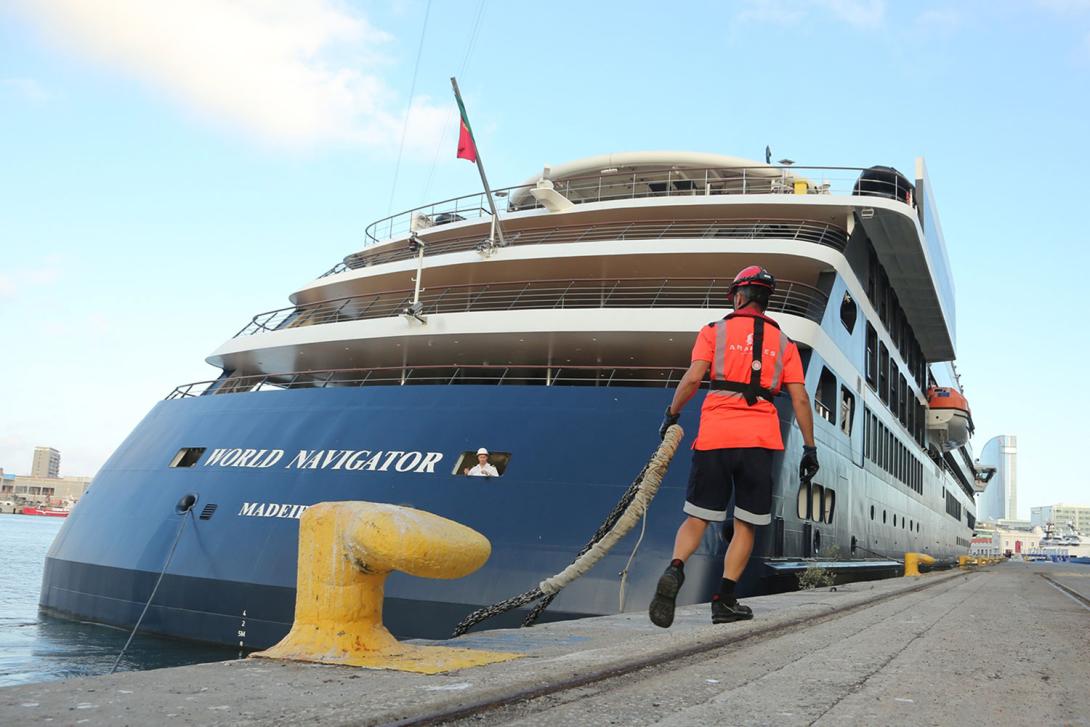The Port of Barcelona closes the North Terminal of the World Trade Center and moves around 340 cruise ship and ferry calls per year to the Adossat wharf
The Barcelona South terminal will also be closed at the end of 2026, which will mean transferring around 70 cruise ship port calls per year.
Transferring these operations will allow Barcelona North wharf to be opened to the public, freeing up 630 metres of quay line and providing the city with more than 13,600 square metres of new public spaces.

Today the Port of Barcelona bid farewell to the last cruise ship to operate at the Barcelona North wharf, located in the World Trade Center, and will transfer all existing cruise activity to the Adossat wharf, an area much further away from the city's residential areas. With the departure of Mystic Cruises' World Navigator, the Port has stopped its operations at Barcelona North, moving around 340 annual cruise ship and ferry calls to the Adossat wharf. Baleària services with the Balearic Islands were already transferred to the Adossat wharf last April.
By closing the Barcelona North wharf to cruise ship and ferry operations, the Port of Barcelona has taken a further step towards fulfilling the commitments it made in 2018 to the City Council to move cruise activity away from urban areas, concentrating them on the Adossat wharf and making them more sustainable.
At the farewell ceremony for the last cruise ship that docked at the Barcelona Nord wharf, Lluís Salvadó, the president of the Port of Barcelona, remarked that “today is a historic day because no cruise ships or ferries will be seen at this wharf again, as the Port of Barcelona will be opening this area to the city and making it available to all of our residents next autumn, once the 37th America's Cup ends.”
Lluís Salvadó recalled that “the closure of the Barcelona Nord wharf for cruise operations is a new step in complying with the agreement signed in 2018 with Barcelona City Council to eliminate the negative externalities that this activity can produce for residents. And it is clear proof that the Port of Barcelona respects its commitments.”
Prior actions
However, this is not the first step that the Port of Barcelona has taken in this regard. Back in 2018, when the agreement with the City Council was signed, the Port closed the cruise terminal located in the Maremagnum, reducing the number of operative terminals from eight to seven. That same year, the Port stopped accepting cruise operations outside the terminals, limiting the number of calls to one ship per terminal.
During this time, the Port of Barcelona has continued to encourage the arrival of the most modern cruise ships of the global fleet - more sustainable vessels which in many cases use transitional fuels such as LNG, significantly reducing the emissions of this traffic segment. Furthermore, works have been ongoing on the Adossat wharf to concentrate all cruise operations in this part of the port precinct from the end of 2026, the year in which the current Barcelona South wharf terminal will be closed.
Transferring all cruise operations to this area of the port, further away from urban areas, involves investments of over EUR 270 million, of which 152 million correspond to public and 125 million to private investment. On top of these investments are those already begun by the Port of Barcelona to electrify the Adossat wharf, adding a further EUR 80 million. Electrifying this wharf means that ships will no longer produce emissions while berthed at the port.
As well as reducing emissions and immission from ships, transferring this traffic from the World Trade Center area to the Adossat wharf will allow the Barcelona North wharf to be opened to the public, freeing up 630 metres of quay line and providing the city with more than 13,600 square metres of new public spaces.



